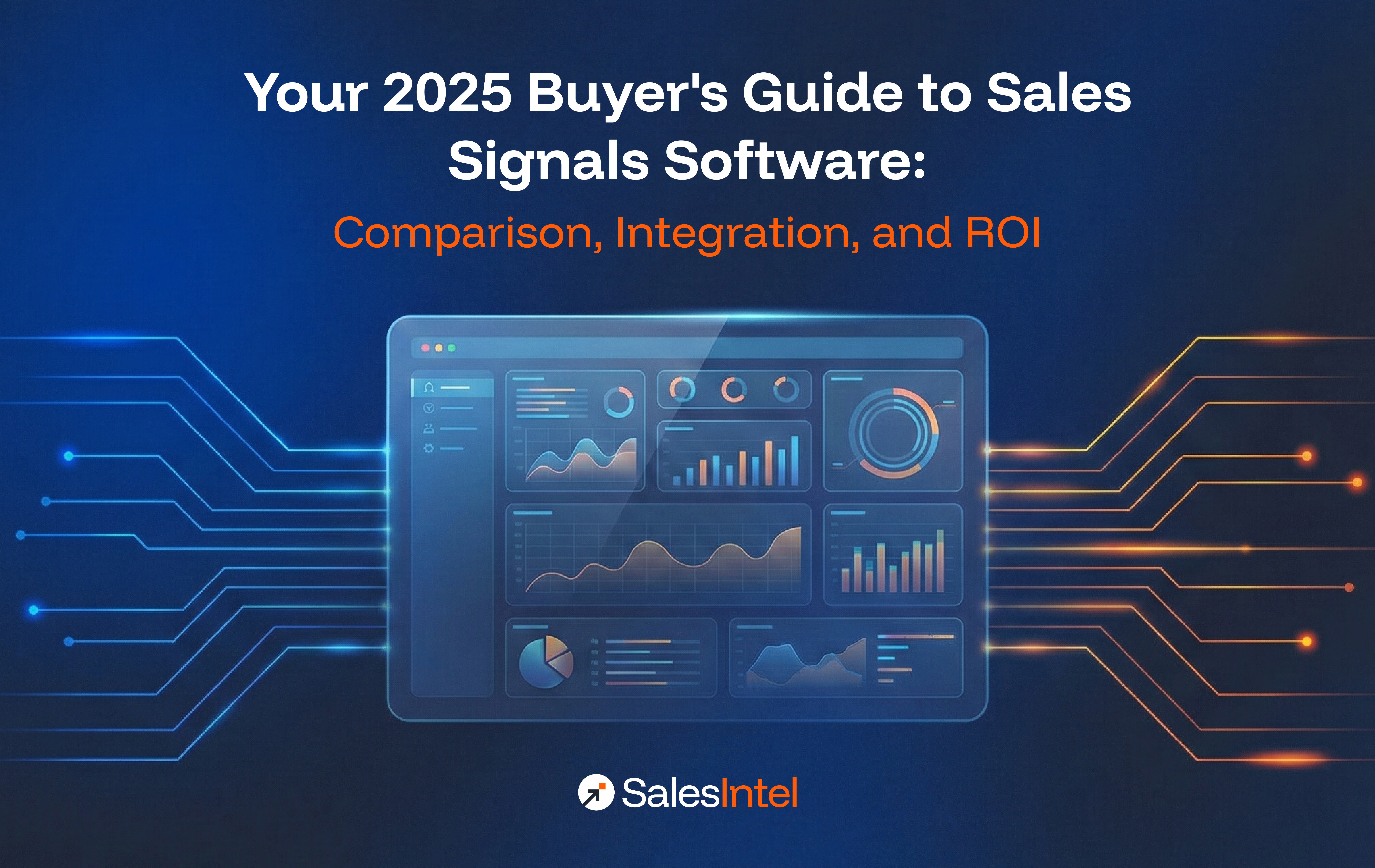Outbound selling is a unique and highly effective sales strategy that can give you unexpected results if done right. Frankly speaking, outbound sales targets are difficult to achieve because sales reps reach out to prospects first and need to have a strong reason to engage them.
In an inbound sales process, potential customers already have a need and reach out to you for the solution. Having said that, you can easily gain success with an outbound sales plan if you’re equipped with the right strategies, tools, and knowledge required to execute the plan.
There are several advantages of using an outbound sales plan that an inbound sales plan may not offer:
· You set the pace of selling
· You rapidly test new products or ideas
· You reach decision-makers directly and earlier
· You create hyper-targeted outreach campaigns
What Is The Difference Between a Sales Process and an Inbound Sales Strategy?
An inbound sales approach focuses on locating people who are already aware of their need for a product like yours and satisfying their specific needs, whereas a sales process contains actions a salesperson takes to turn a prospect into a paying customer.
What is Outbound Sales?
Outbound sales is a sales approach in which a sales representative actively reaches out to potential customers through channels such as cold calling, email, or social media. The goal of outbound sales is to identify and engage with potential customers who may not be actively looking for the company’s products or services.
The main difference between outbound and inbound sales is that in inbound sales, the customer reaches out to the company when they’re ready to buy while outbound sales starts with the company seeking out potential customers and reaching out to them.
Outbound sales efforts can include a variety of activities, such as cold calling, email campaigns, direct mail campaigns, and more. Sales representatives use these activities to generate new leads, build relationships with potential customers, and ultimately drive revenue for the company.
However, it is worth noting that the traditional cold calling method of outbound sales may not be as effective as it used to be. In order to be effective, companies need to find innovative ways to reach their target audience. Personalization and focusing on value proposition are some of the ways that outbound sales can adapt to the current trends.
What is an Outbound Sales Process?
An outbound sales process is the steps that a seller or sales rep takes to reach out to prospects to convert them into paying customers. The initial contact in an outbound sales process is usually made with a cold call. Outbound sales reps follow a framework given by sales leaders to close as many deals as possible. A typical outbound sales process may include five steps:
· Knowing your target audience or leads
· Executing lead generation tasks
· Performing sales qualification
· Making sales calls or setting up meetings
· Completing deal closures
What is Outbound Prospecting?
Outbound prospecting (also known as outbound sales) is the process where sales professionals research, identify, and contact prospects. The ultimate aim is to get potential clients into the sales cycle and convert them into clients.
Inbound Sales vs Outbound Sales
Inbound sales involve attracting potential customers to your business and then guiding them through the sales process. This is typically done through marketing efforts such as creating valuable content or using social media to generate leads. Outbound sales, on the other hand, involve actively reaching out to potential customers through tactics such as cold calling or direct mail.
Inbound sales is focused on building relationships and providing value to potential customers, while outbound sales is more focused on promoting products or services. Both approaches can be effective in the right circumstances, and some companies choose to use a combination of both.
Inbound vs Outbound Prospecting
Inbound prospecting involves attracting potential customers to your business through marketing efforts, such as creating valuable content or using social media. Outbound prospecting, on the other hand, involves actively reaching out to potential customers through tactics such as cold calling or direct mail. Inbound prospecting is focused on building relationships and providing value to potential customers, while outbound prospecting is more focused on promoting products or services. Both approaches can be effective in the right circumstances, and some companies choose to use a combination of both.
What Do Outbound Calls Mean?
Outbound calls are often conducted to prospective customers to sell and generate leads.
How to Build an Outbound Sales Team
To build an outbound sales team, define your ideal customer profile and target market. Hire individuals with strong communication and sales skills and provide comprehensive training. Use a CRM system to track leads and measure performance. Create a supportive and incentivized team culture. Regularly analyze data to optimize lead generation and conversion.
3 Tips to Get Started with Outbound Sales Process
It’s imperative to build an efficient outbound sales system even before you think of expecting results. Having a foolproof outreach plan and hiring the right salespeople are key to putting together an outbound sales system that works. Tossing a few reps in a room with phones and crossing your fingers isn’t going to cut it. Here are the three most important steps you should take to create a productive outbound sales process:
1. Create a value proposition that your prospects can’t resist
Outbound sales become more effective if you give your audience a good reason to choose you over your competitor. Your value proposition not only covers that reason, but it also gives an impressive introduction of your brand, highlights key benefits you offer to customers, and how your solutions can solve their problems.
Take Salesforce’s latest value proposition as an example: “Get back to growth with the world’s #1 CRM, powered by Customer 360.” It sends out a clear message that the company offers the best CRM in the world. Moreover, it targets businesses that are struggling to improve their growth. By stating that the company offers the number one CRM, Salesforce also targets businesses that are growing and looking to scale their growth further by upgrading their CRM to the best one available.
2. Build your ideal customer profile (ICP) to know who to target
You have an ideal buyer persona in mind that best represents the customer your company wants and that would buy from your company. However, it’s always better to define your ideal buyer persona through research and data to paint a clear picture of prospects you’re going to target, especially to help your sales reps find targets faster. Organizations that have developed a strong ICP and adopted account-based strategies average a 68% higher account win rate.
Furthermore, creating an ICP allows you to stay laser-focused on your outbound sales effort and save hours of prospecting time. To build your ICP, you need to eliminate guesswork by embracing a data-driven approach. Sales intelligence, including B2B data, not only helps you identify ideal buyers but also enables you to prioritize their attributes and pinpoint commonalities between them. Moreover, it allows you to use ICP data to create a personalized outbound sales strategy.
3. Don’t depend on a single strategy to expand your lead database
Diversify your lead generation efforts to maintain the flow of leads in your outbound sales pipeline. Adopting multiple ways to generate leads will ensure your outbound sales reps never lack prospects to reach out to. You can begin to strengthen your lead database by using traditional strategies like direct mail, outdoor advertising, print advertising, etc. You can also host events and conferences to connect to key decision-makers and people of your business interest.
Considering the pandemic restrictions, it’d make sense to go digital when using such strategies – for example, webinars or virtual conferences can work great for lead generation. Speaking of digital ways to generate leads, you can optimize your website, increase web form conversion rate, grow your social media presence, publish online guides and long-form content, and create a product or explanatory videos. Additionally, ebooks, whitepapers, case studies, surveys, or research reports can be used as downloads to collect lead information through web forms.
Content and events also give your sales reps talking points and sharable material to give to prospects during their outreach. A sales meeting might be too much for a prospect, but attending a webinar might be an easier ask to move the relationship forward.
How to Generate Outbound Leads the Faster Way
An easier and quicker way of generating outbound leads is purchasing a lead database or using free lead generation tools.
For example, VisitorIntel lets you know who visited your website and uses visitor tracking data to associate visitors with their companies. You also get access to a complete profile of these companies along with technographic and firmographic data provided through the SalesIntel database. This helps you easily reach out to key influencers or companies interested in your brand or product.
RevDriver, a free Chrome extension, is another outbound sales intelligence tool you can use to capture leads through LinkedIn or company websites. It helps to skip the waiting time to connect with your target audience on LinkedIn since you can send an email directly instead. The most recent version allows free users to reveal direct-dial phone numbers, verified emails, and other information for 100 contacts per month and includes a credit counter to help users keep track of their credit usage.
3 Strategies to Boost Your Outbound Sales
Now that you’re equipped with useful tips to create a result-oriented outbound sales process let’s take your outbound sales game a level higher. Here are three ways to increase your outbound sales deals.
1. Use outbound sales automation
Sales force automation reduces sales administration time by 14%, reduces sales cycles by 18%, and increases deal closures by 30%. Furthermore, lead nurturing sales automation has helped brands with a 225% increase in the volume of prospects that converted to sales opportunities.
Using sales automation is an excellent way to improve response time and sales team productivity, accelerate the outbound sales process, and avoid losing leads during the sales process. Power dialer, automated voicemails, CRM, sales sequences, and search filters for B2B data are some of the most effective ways to automate your outbound sales process.
Having said that, too much sales automation could make your outreach activities sound or look robotic. Don’t forget your prospects are human, and it’s necessary to add a personal touch to your outbound sales strategy.
2. Take advantage of gamification
Gamification can work both ways: motivating your sales reps to close more deals (sales gamification) and encouraging customers to buy more from you or prospects to engage more with your brand. Companies like Microsoft, Salesforce, SAP, Nike, Spotify, Cisco, and many more have used gamification to scale sales performance or customer engagement.
Sales gamification helps to motivate your sales team to reach their goals through improved performance which increases your ROI. It’s commonly done by introducing game-like elements, social gaming, or friendly competitions in the sales process.
For example, Autodesk saw an increase of 29% in channel revenue per trial start, 15% in buy clicks, and 54% in trial usage by gamifying its free trial with incentives and both real-world and in-game prizes. Hewlett Packard improved sales by around 56% by rewarding the best reseller teams with holiday packages and other goods. Cisco used gaming methods to enable its call centers to reduce call time by 15% and improve sales by 10%.
3. Measure the outcome of your strategy
Measuring the success of your outbound sales strategy is as important as creating one. It helps you to know if you’re going in the right direction to achieve your outbound sales target. Among key metrics to measure your outbound sales campaign are: sales velocity, opportunities to win ratio, leads to opportunities ratio, calls to appointments ratio, and email click rate.
Note that before tracking these metrics, you need to first understand what you want to achieve with your outbound sales campaign. If you’re not sure then these stats can help you establish a baseline to improve on.
Sales velocity helps you to know the rate at which leads move through the sales funnel. With the opportunities to win ratio, you can track the number of opportunities that have been converted into paying customers. The leads to opportunities ratio let you know if your outbound leads match your ICP and if your sales reps are focusing on the right accounts for conversions.
The calls to appointments ratio allows you to know how many outbound calls have resulted in appointments or meetings. By tracking your email click rate, you can know which email outreach strategy is working and which is not. Accordingly, you can make changes to your email content or update your email list to ensure the best outcome. Remember, sending generic emails and bad data can devastate your cold email conversions.
3 Outbound Sales Tools You Definitely Need
Outbound sales tools are absolutely necessary to improve your outbound sales messaging and communication, track the progress of your outbound sales campaigns, and keep your outbound sales team highly organized. Here are three outbound sales tools you can’t operate without.
1. Intent Data
Your outbound sales results are more likely to soar if you have easy access to quality B2B data. Apart from firmographic and technographic data, intent data can be a crucial asset to fuel your outbound sales team. It enables you to deliver more targeted outbound sales campaigns as you quickly identify prospects in your target audience and accounts with buyer intent.
Besides expediting your outbound sales pipeline, intent data allows you to create highly personalized messages to close more deals. After all, companies that use advanced personalization report a $20 return for every $1 spent.
2. Communication System
Automated communication platforms with built-in emailing and calling features can save you hours of outbound sales time and deliver you handsome returns. Automation is proven to increase sales productivity by 14.5%. Further, automated emails have a 152% higher click-through rate and a 70.5% higher open rate than generic email newsletters.
With an automated communication system, you can easily set up outbound sales cadences and perform multi-channel prospecting. You can also track outbound tasks and activities in real-time by integrating your communication platform with your CRM.
3. CRM Platform
CRM software is one of the most important outbound sales tools you need to build stronger customer relationships and drive customer trust and loyalty, which promises faster and higher revenue growth. It can centralize all of your customer data, strengthen your customer-centric outbound sales strategy, and automate most of your customer-facing business processes. 65% of companies that use a mobile CRM are achieving their sales quotas. Further, 50% of teams that use a mobile CRM improved their productivity.
The data in your CRM system is critical to the success of your outbound sales campaigns. Check that the B2B contact and company information and other data in your CRM are accurate and reliable. If you already have a CRM system in place and want to improve your CRM data, you can refer to this comprehensive guide.
What Is The Difference Between Inbound And Outbound Marketing?
Outbound marketing entails proactively reaching out to consumers in order to pique their interest in a product. On the other hand, inbound marketing focuses on developing and sharing content that attracts visitors to your website.
Outbound marketing is often more aggressive and broad-reaching, with the assumption that at least some individuals would convert. Inbound marketing is generally more subtle and focused on gradually persuading a certain set of people to make a purchase.
The Wrap
The tips and strategies discussed above can significantly improve your outbound sales performance. As final words of advice, we’d advise you to use battle cards as they can be a powerful outbound sales hack. Battle cards help your outbound sales team refer to your own products, USPs, statistics, and specific company data as well as your competitor details during a prospect chat. This helps to build trust with your prospects and confidently compare yourself with your competitors.
You can also conduct ongoing training sessions for outbound sales reps throughout their tenure in your company. This will always keep them updated about your outbound sales process and your brand and consistently improve their performance.
As explained earlier, always remember to include accurate and authentic B2B data in your outbound sales strategy. Without reliable data to feed your outbound sales reps and SDRs, you’d be relying on the spray and pray approach. That’s why B2B data and sales intelligence providers like SalesIntel offer solutions that fill this gap and remove data-related challenges in your outbound sales process.
SalesIntel’s 95% accurate human-verified B2B data, that’s reverified every 90 days and on-demand research service is the outbound sales booster you need. Learn how SalesIntel as your data partner can save you over $30,000 per sales rep.





